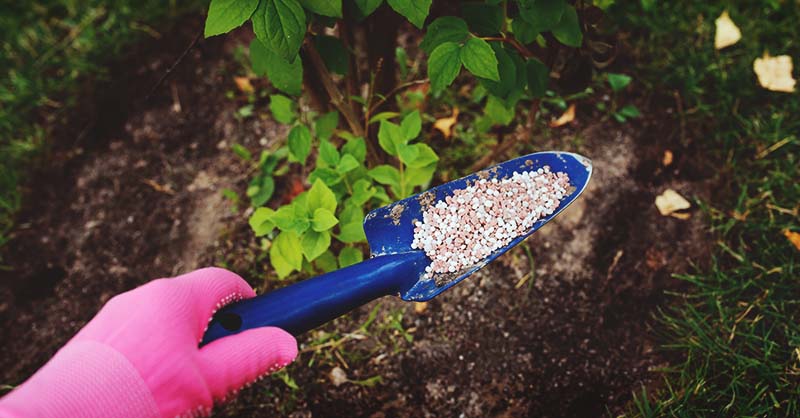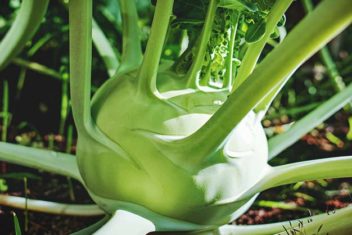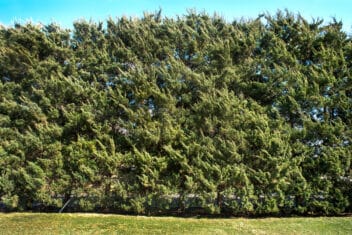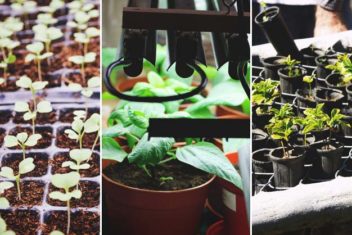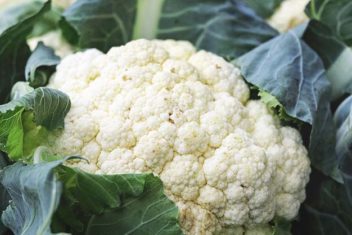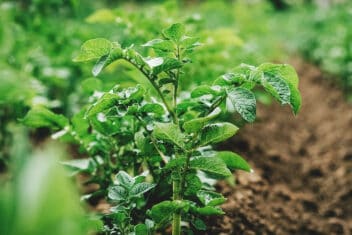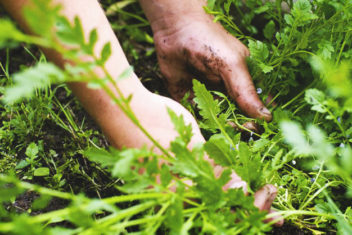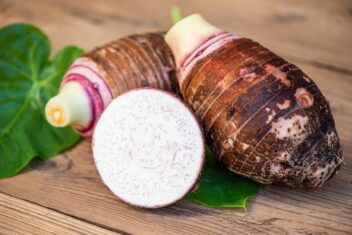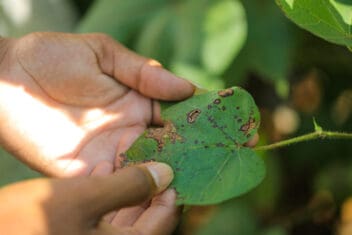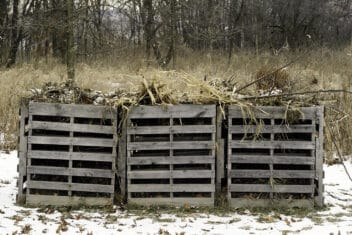Did you know that using an all-purpose fertilizer like 10-10-10 regularly can overload your garden with nutrients and negatively impact plant health?
Unused nutrients can also run-off during periods of rain and cause problems in other areas of your landscape. Or, they can end up in sewers and contribute to dangerous algae blooms in our waterways.
If you are growing an organic garden, you likely aren’t using a fertilizer as strong as a 10-10-10. But, you probably know exactly how expensive it is to buy organic fertilizer mixes such as a 4-4-4. Plus, even in an organic garden, applying more fertilizer than your plants actually need can increase your costs and create imbalances in your soil over time.
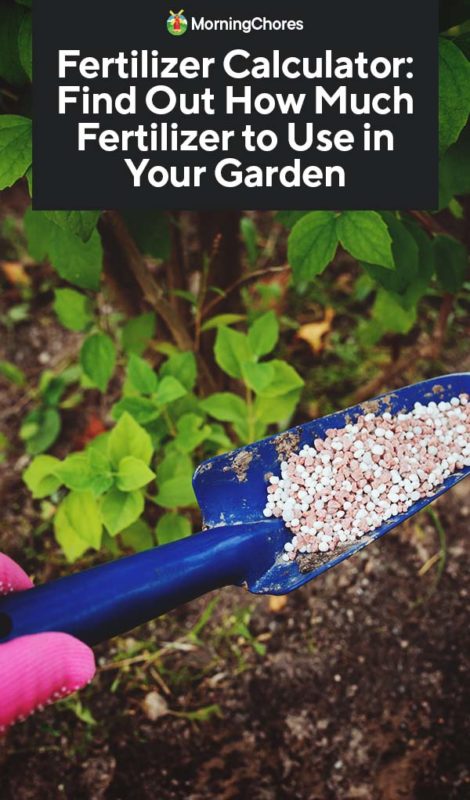
Use Our Fertilizer Calculator to Make Your Own Vegetable Specific Fertilizers
If you’re looking for a more environmentally sound and economically advantageous way to garden, then consider making your own vegetable specific fertilizer mixes.
Carrots, for instance, require much less nitrogen than corn, lettuce or cabbage. Root vegetables may require more phosphorous than leafy greens. Every vegetable you are likely to grow in a homestead vegetable garden has unique nitrogen, phosphorous, and potassium (N-P-K) needs.
Rather than spending too much and over-fertilizing, why not use our fertilizer calculator to create fertilizer mixes perfect for the vegetables you want to grow? Here’s how to use our nifty fertilizer calculator:
Step 1: Identify Your Garden Type
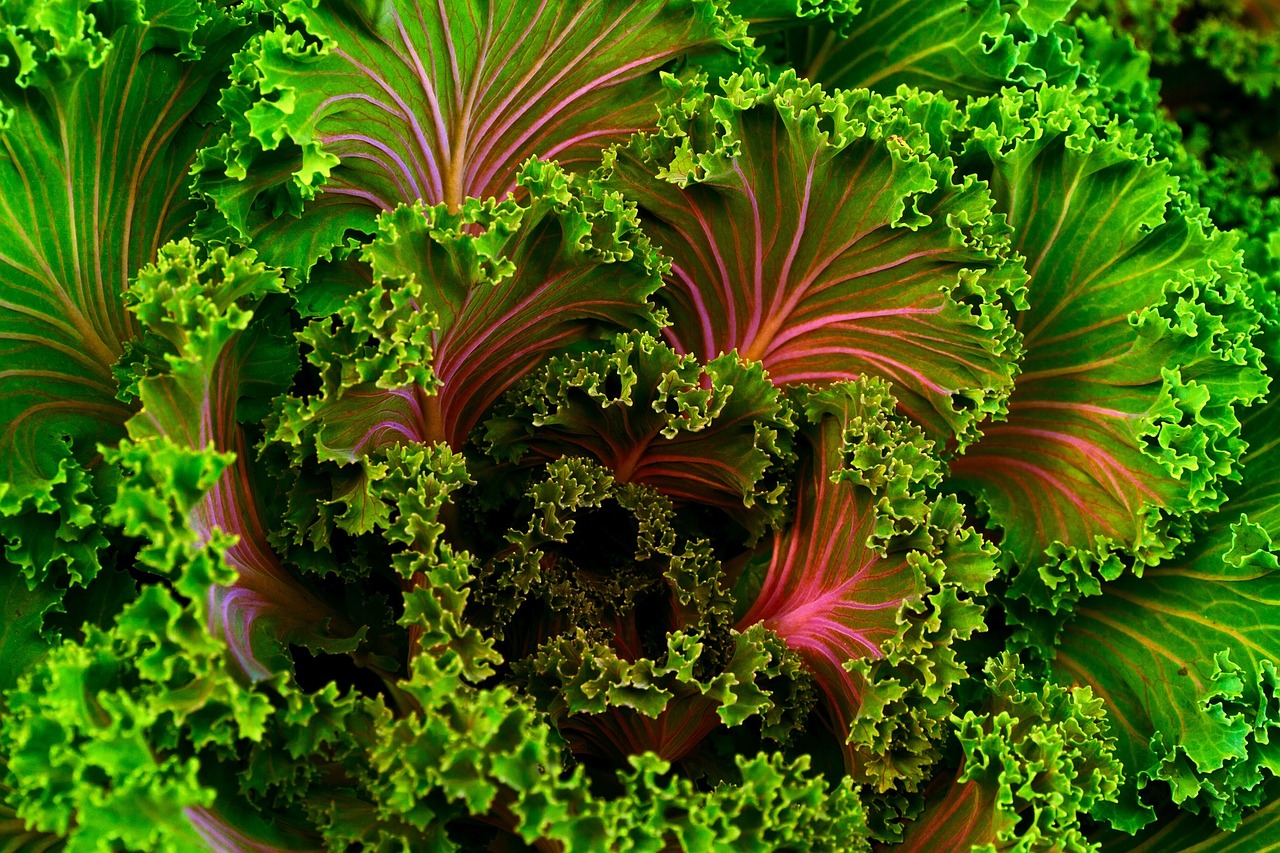
Organic and traditional gardens have very different fertilizer needs. So, first start by determining which type of gardening method you are using.
Organic Garden
Organic gardens are enriched with at least a couple inches of compost annually. The emphasis is on improving the soil quality with things like cover crops, crop rotation, mulch, and more so that the soil feeds plants.
Also, in an organic garden, synthetic fertilizers are never used. Organic pesticides and herbicides are only used as a last resort. Because of the focus on increasing biological life in the soil, organic gardens typically need only half the fertilizer required in a traditional garden.
Traditional Garden
Traditional gardening usually relies on regular tilling. Fertilizer is the primary soil amendment used regularly. In a conventional garden, pesticides, herbicides, and synthetic fertilizers may be used.
Unless your garden specifically meets the organic garden definition above, then your vegetables will usually do much better with about twice the amount of N-P-K fertilizer than is required in an organic garden.
What is your garden type?
Step 2: Enter Your Planting Area
Now that you have made your garden type selection, specify the square feet of space you plan to grow of each vegetable. The table will update with the amount of N-P-K your planting area needs.
| Vegetable | Garden Size (sqft) | N per Foot (lbs) | N (lbs) | P per Foot (lbs) | P (lbs) | K per Foot (lbs) | K (lbs) |
|---|---|---|---|---|---|---|---|
| Beets | 0.002754820936639120 | 0.2754820936639120 | 0.0020661157024793 | 0.2066115702479340 | 0.0036730945821855 | 0.3673094582185490 | |
| Beans | 0.0013774104683196 | 0.0688705234159780 | 0.0011478420569330 | 0.0573921028466483 | 0.0021808999081726 | 0.1090449954086320 | |
| Broccoli | 0.0022956841138659 | 0.2295684113865930 | 0.0020661157024793 | 0.2066115702479340 | 0.0032139577594123 | 0.3213957759412300 | |
| Cabbage | 0.0041322314049587 | 0.8264462809917360 | 0.0021808999081726 | 0.4361799816345270 | 0.0039026629935721 | 0.7805325987144170 | |
| Carrots | 0.0027548209366391 | 0.2754820936639120 | 0.0028696051423324 | 0.2869605142332410 | 0.0078053259871442 | 0.7805325987144170 | |
| Celery | 0.0032139577594123 | 0.0803489439853076 | 0.0041322314049587 | 0.1033057851239670 | 0.0091827364554637 | 0.2295684113865930 | |
| Corn | 0.0034435261707989 | 1.7217630853994500 | 0.0022956841138659 | 1.1478420569329700 | 0.0011478420569330 | 0.5739210284664830 | |
| Lettuce | 0.0027548209366391 | 0.1652892561983470 | 0.0016069788797062 | 0.0964187327823691 | 0.0033287419651056 | 0.1997245179063360 | |
| Onion | 0.0013774104683196 | 0.1377410468319560 | 0.0032139577594123 | 0.3213957759412300 | 0.0052800734618916 | 0.5280073461891640 | |
| Peas | 0.0009182736455464 | 0.0459136822773186 | 0.0011478420569330 | 0.0573921028466483 | 0.0016069788797062 | 0.0803489439853076 | |
| Peppers | 0.0022956841138659 | 0.1147842056932970 | 0.0020661157024793 | 0.1033057851239670 | 0.0034435261707989 | 0.1721763085399450 | |
| Potatoes | 0.0041322314049587 | 0.2066115702479340 | 0.0042470156106520 | 0.2123507805325990 | 0.0056244260789715 | 0.2812213039485770 | |
| Summer Cucurbits | 0.0018365472910928 | 0.0459136822773186 | 0.0020661157024793 | 0.0516528925619835 | 0.0028696051423324 | 0.0717401285583104 | |
| Winter Cucurbits | 0.0022956841138659 | 0.4591368227731860 | 0.0029843893480257 | 0.5968778696051420 | 0.0048209366391185 | 0.9641873278236910 | |
| Spinach | 0.0022956841138659 | 0.1147842056932970 | 0.0022956841138659 | 0.1147842056932970 | 0.0034435261707989 | 0.1721763085399450 | |
| Sunflower | 0.0022956841138659 | 0.4591368227731860 | 0.0013774104683196 | 0.2754820936639120 | 0.0020661157024793 | 0.4132231404958680 | |
| Tomatoes | 0.0032139577594123 | 0.4820936639118460 | 0.0027548209366391 | 0.4132231404958680 | 0.0064279155188246 | 0.9641873278236910 | |
| Turnips | 0.0013774104683196 | 0.0688705234159780 | 0.00137741046831956 | 0.0688705234159780 | 0.00229568411386593 | 0.1147842056932960 |
References
Step 3: Calculate the Nutrient Content of Your Fertilizer
The N-P-K figures on your bag of fertilizer represent the percentage of that nutrient in a bag. For example, in a 50-pound bag of feather meal, showing N-P-K amounts of 14-0-0, you have only 7 pounds of nitrogen (50 lbs x 14% = 7 lbs). The other 43 pounds is organic matter.
Therefore, to create your own fertilizer formula, the first step is to identify precisely how much of each nutrient is contained in your bag of fertilizer.
Enter your bag weight and N-P-K values below, and we’ll figure out nutrient quantities for you. Also, enter your bag cost now for use in Step 5 below.
If you are not sure what type of fertilizers you plan to use, refer to our list as a starting point to help you figure it out.
| Bag Weight (lbs) | N | P | K | Cost per Bag ($) | |
|---|---|---|---|---|---|
| Nutrients Amount in a Bag: | |||||
| Nutrients Amount in a Bag: | |||||
| Nutrients Amount in a Bag: | |||||
Step 4: Select a Vegetable
Now that you have entered all the relevant information in steps 1-3 select the first vegetable on your list to create a custom fertilizer mix.
Note, after you finish your calculations for this vegetable, return to this step to calculate fertilizer amounts for the next vegetable on your list.
Step 5: Finalize Your Plant-Specific Fertilizer Formula
The table below will load your vegetable specific fertilizer needs and the amount of nutrients from your fertilizer sources above.
All you need to do is adjust the pounds of each fertilizer to apply (yellow columns) until the surplus/deficit columns are close to 0. We offer suggestions to help you figure it out. But, you may want to play around a little so you can arrive at the lowest cost formula possible.
If you’re reading on mobile phones, turning your device sideways will make it easier to edit the table below.
| N | P | K | How Much to Apply (lbs) | Cost to Apply ($) | |
|---|---|---|---|---|---|
| $0.00 | |||||
| $0.00 | |||||
| $0.00 | |||||
| Total Nutrients from Fertilizer (lbs) | 0.14 | 0.28 | 0.25 | Total Cost: | $0 |
| Nutrient Requirements for Beets | 0.21 | 0.28 | 0.15 | ||
| Surplus / Deficit | -0.07 | 0.00 | +0.10 |
When you are happy with your formula for this vegetable, write that formula down in your garden journal. Then, return to step 4 of the fertilizer calculator and choose your next plant.
After you have finished making all of your vegetable formulas, move on to step six.
Step 6: Make and Apply Your Fertilizer
Use your custom formulas to make your own fertilizer mixes. Apply half of your mixture at the time of planting. Then, side dress your plants with the other half of your mixture 4-6 weeks through the vegetable growing period.
If your variety takes more than 2-3 months to mature, you may want to divide your mixture into three parts and apply 1/3 of the mixture every six weeks.
Some Extra Field Advice
No two gardens are exactly alike. The amounts of our fertilizer calculator are approximations for what each vegetable needs during the growing season.
You may have to make a few adjustments for your exact growing conditions. For example, if your soil test shows that you have excess phosphorous in your soil, reduce or eliminate the amount of phosphorous included in your final formula.
If you are planting more densely than the standard planting instructions call for, more fertilizer may be required. Factors such as excessive rain or drought may make nutrients less available in the soil.
Monitor the visual health of your plants and fine tune your fertilizer as necessary. Excessive top growth means too much nitrogen is in the soil. Leaves that are pale in color and stunted plants often indicates the soil has too little available nitrogen.
Purple tinged leaf tips, or sparse fruit set usually means more phosphorous is needed. Yellowing of the leaves between the veins or dried up edges may mean potassium is lacking.
Even when using custom fertilizer mixes, always let the health of your plants be your ultimate guide to make sure you provide the nutrients plants need for healthy development.

